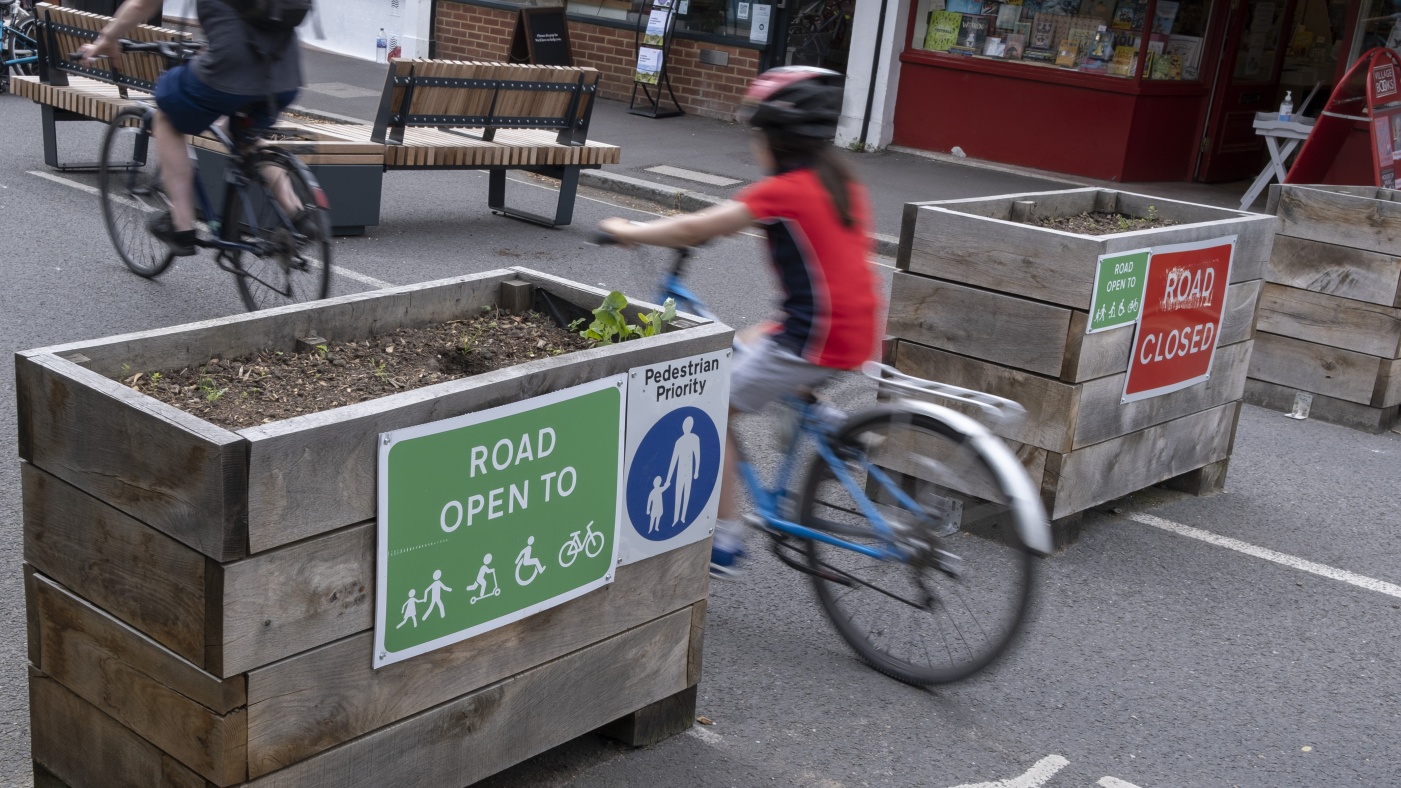Pros and cons of low-traffic neighbourhoods
Car-reduction schemes have proved controversial in London

Low-traffic neighbourhoods (LTNs) have been introduced by local councils across London with the goal of creating safer and healthier communities but critics say the scheme is in fact having the opposite effect.
LTNs have been implemented across various boroughs in London, and aim to restrict traffic on residential streets, prioritising pedestrians, cyclists and public spaces.
London has had LTNs “since the 1970s” reported The London Evening Standard, but a “flurry” of schemes have been implemented since 2020 as part of the Mayor of London’s plan for 80% of all trips in the capital to be by active or sustainable modes by 2041.
The Week
Escape your echo chamber. Get the facts behind the news, plus analysis from multiple perspectives.

Sign up for The Week's Free Newsletters
From our morning news briefing to a weekly Good News Newsletter, get the best of The Week delivered directly to your inbox.
From our morning news briefing to a weekly Good News Newsletter, get the best of The Week delivered directly to your inbox.
Boroughs with LTNs include Camden, Croydon, Ealing, Hackney, Hounslow, Islington, Lambeth, Newham and Waltham Forest, with most boroughs having implemented the scheme in some form.
But critics of the scheme say it can have unintended consequences that outweigh any potential benefits. The Week examines some of the arguments for and against LTNs.
1. Pro: safer for pedestrians
One of the biggest advantages of LTNs is that they improve safety for pedestrians. According to data from Transport for London, 80% of deaths on London’s streets are people walking, cycling or on motorbikes and mopeds. By creating almost car-free zones, LTNs provide a safer environment for vulnerable road users.
2. Con: questionable effectiveness
Critics argue that the effectiveness of LTNs in reducing traffic and emissions is questionable. A study by The Times found that traffic did not decrease in the London boroughs but “rose by an average of 41 million miles or 11.4% as traffic came back after the first lockdown”.
A free daily email with the biggest news stories of the day – and the best features from TheWeek.com
In comparison, the two inner London boroughs that did not implement the scheme saw a rebound of only 29 million miles or 8.9%. The figures suggest that the schemes “may not be as green as their promoters suggest”, argued The Times, as “cars caught in jams or having to take longer journeys emit thousands of tonnes more carbon dioxide”.
3. Pro: improving air quality
According to a study conducted by Imperial College London in 2022, which analysed three distinct schemes implemented in Islington, north London, LTNs that used planters, barriers and cameras to limit vehicle access to residential streets resulted in a decrease in both traffic volume and nitrogen dioxide pollution.
The study revealed that concentrations of nitrogen dioxide decreased by 5.7% within the LTNs and by just under 9% on the surrounding boundary roads, in comparison to the control sites.
4. Con: emergency services block
This is a “genuine factor” that should be taken into consideration when it comes to the implentation of LTNs, said The Guardian, and councils have had to make some alterations to the schemes – for example, using cameras instead of physical barriers on some roads – after consultation with fire and ambulance services.
5. Pro: encouraging healthier habits
Encouraging more people to walk and cycle was a key aim of the government’s introduction of LTNS in 2020. According to the Centre for London, boroughs that tracked cycling over time found large increases in cycling both inside and outside LTNs, with greater increases inside LTNs.
Between spring 2019 and 2021, cycling increased on average by 7% in inner London and 22% in outer London, as people sought alternative modes of transport during the pandemic and took advantage of quiet LTN streets to cycle.
6. Con: pushing traffic to other areas
Opponents argue that LTNs can push traffic – and the problems created by traffic – into neighbouring areas. While this may improve the neighbourhoods in which LTNs have been implemented, critics argue that they effectively push the problems elsewhere.
However, a study by the University of Westminster has suggested this fear could be unfounded. Researchers found that there was minimal increase in traffic on neighbouring roads.
-
 A TikTok trend has Gen Z men leaving streetwear behind for more preppy attire
A TikTok trend has Gen Z men leaving streetwear behind for more preppy attireThe Explainer More than a zipper: Young Black men embrace the ‘quarter-zip movement‘
-
 Codeword: December 12, 2025
Codeword: December 12, 2025The daily codeword puzzle from The Week
-
 Sudoku medium: December 12, 2025
Sudoku medium: December 12, 2025The daily medium sudoku puzzle from The Week